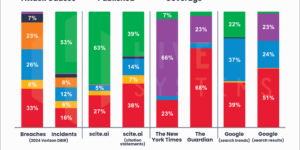The Pacific Ocean, named for placidity, is roaring.
In the past week, eight tropical systems — and that includes two major typhoons — have formed across the Pacific from China to Mexico. On top of that, another system developed in the Southern Hemisphere, putting the two-week tally for the basin at nine, said Phil Klotzbach, a hurricane researcher at Colorado State University.
“It has been super active in the Pacific,” Klotzbach said.
The culprits, aside from the fact it’s summer in the Northern Hemisphere, are El Nino and the Madden-Julian Oscillation. (That last one just rolls off your tongue doesn’t it? Well, you can call it MJO for short.)
El Nino means the equatorial Pacific is warmer than normal, even warmer than it usually is in the summer. Warm water is the nectar of life for tropical cyclones, the class of systems that include tropical storms, hurricanes and typhoons.
The MJO is a slug of energy that moves through the atmosphere the way a ripple crosses a pond. When the MJO enters an ocean basin where all the parts of a system are lying around, it just kickstarts things and gets the storm train rolling.
Robust MJO
This isn’t the first time this year El Nino and MJO have gotten together to fire up the Pacific. In March, four storms burst out across the basin, with two bracketing Australia and a third devastating Vanuatu.
“The MJO, it has been pretty robust all year,” Klotzbach said. “Start with an El Nino and dump on top of that an MJO, and that favors the Pacific.”
As of Monday, some of the storms had dissipated already but there were plenty of threats still on the water.
Typhoon Nangaka, churning up 45-foot high waves Monday, now threatens Shikoku, one of Japan’s home islands, on Thursday. The storm’s winds were forecast to reach Category 3 strength, then weaken before going ashore, said the Joint Typhoon Warning Center run by the U.S. Navy and Air Force.
Over the weekend, Typhoon Chan-hom grazed China’s east coast and has since broken up into a remnant low on its way to North Korea. In the deep Pacific, Tropical Storm Halola, which formed south of Hawaii, is now heading west.
Hawaiian Storms
A second system near Hawaii, Iune, has become a post- tropical cyclone, the U.S. Central Pacific Hurricane Center said. Tropical Storm Ela passed north of the islands last week.
“Three storms forming in the central Pacific in a week has never ever happened before,” Klotzbach said.
The Pacific is so large that many storms may have been missed in the days before satellites kept a close watch on it, he said. Good records go back to the 1980s.
The three storms also demonstrate the might of the MJO if given the right conditions, said Dan Kottlowski, a meteorologist with AccuWeather Inc. in State College, Pennsylvania.
The MJO has pushed into the eastern Pacific, where Tropical Storm Enrique and Hurricane Dolores were spinning across the ocean off Mexico’s coast. Dolores, the closer and stronger of the two, is forecast to become a Category 3 major hurricane by Wednesday as it moves away from land, the U.S. National Hurricane Center said.
No Record
“A very, very strong MJO has really triggered a lot of activity,” Kottlowski said.
The most storms ever to show up in the Pacific in a two- week period was 11 in 1968, Klotzbach said. The global record for a two-week run is 12, set in 1988 and again in 1992 and 1995, he said. There were El Ninos in all of those years, too.
And while this has been going on in the Pacific, will the Atlantic also see a burst of activity?
Probably not, Klotzbach and Kottlowski said.
The U.S. hurricane center is tracking Tropical Storm Claudette off the coast of Massachusetts. It will probably break up by Wednesday and strike southern Newfoundland as just a regular storm.
Elsewhere in the basin, conditions just aren’t conducive for storms to develop, Klotzbach said. Wind shear, which can rip a tropical system apart, is holding sway in the typical areas where storms get started.
“The shear in the Caribbean is ridiculously strong,” he said.
Maybe this is the year for an August vacation in the Lesser Antilles.




















 Surviving the ‘Silver Tsunami’: Closing the Talent, Skills Gap in Underwriting
Surviving the ‘Silver Tsunami’: Closing the Talent, Skills Gap in Underwriting  Weak La Nina Expected in the Central Region of the U.S. This Winter: NWS
Weak La Nina Expected in the Central Region of the U.S. This Winter: NWS  Most Distracting Holiday Songs for Drivers Ranked
Most Distracting Holiday Songs for Drivers Ranked  Study: Widening Gap Between Cyber Attack Causes, Public Perception
Study: Widening Gap Between Cyber Attack Causes, Public Perception 








